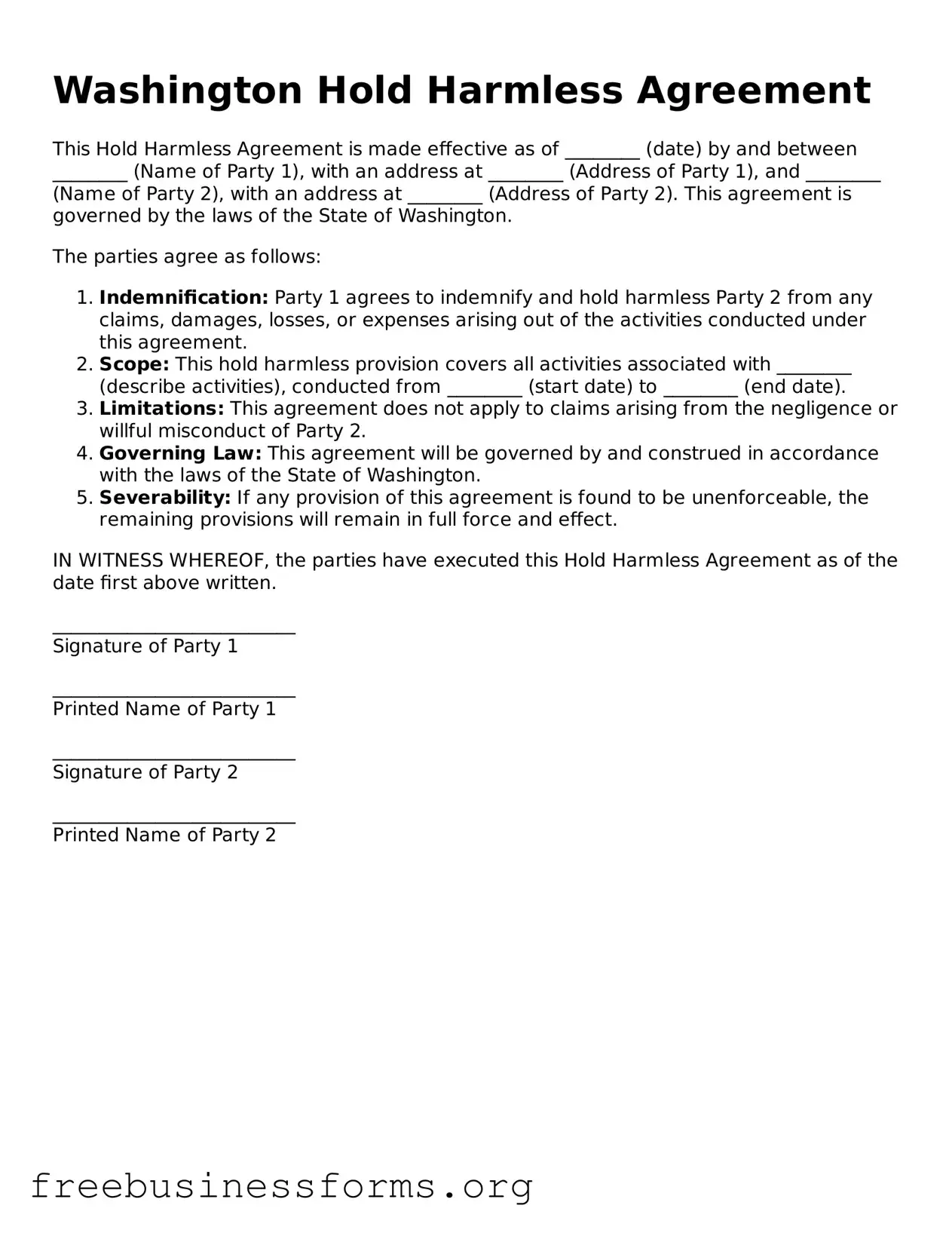Washington Hold Harmless Agreement
This Hold Harmless Agreement is made effective as of ________ (date) by and between ________ (Name of Party 1), with an address at ________ (Address of Party 1), and ________ (Name of Party 2), with an address at ________ (Address of Party 2). This agreement is governed by the laws of the State of Washington.
The parties agree as follows:
- Indemnification: Party 1 agrees to indemnify and hold harmless Party 2 from any claims, damages, losses, or expenses arising out of the activities conducted under this agreement.
- Scope: This hold harmless provision covers all activities associated with ________ (describe activities), conducted from ________ (start date) to ________ (end date).
- Limitations: This agreement does not apply to claims arising from the negligence or willful misconduct of Party 2.
- Governing Law: This agreement will be governed by and construed in accordance with the laws of the State of Washington.
- Severability: If any provision of this agreement is found to be unenforceable, the remaining provisions will remain in full force and effect.
IN WITNESS WHEREOF, the parties have executed this Hold Harmless Agreement as of the date first above written.
__________________________
Signature of Party 1
__________________________
Printed Name of Party 1
__________________________
Signature of Party 2
__________________________
Printed Name of Party 2
